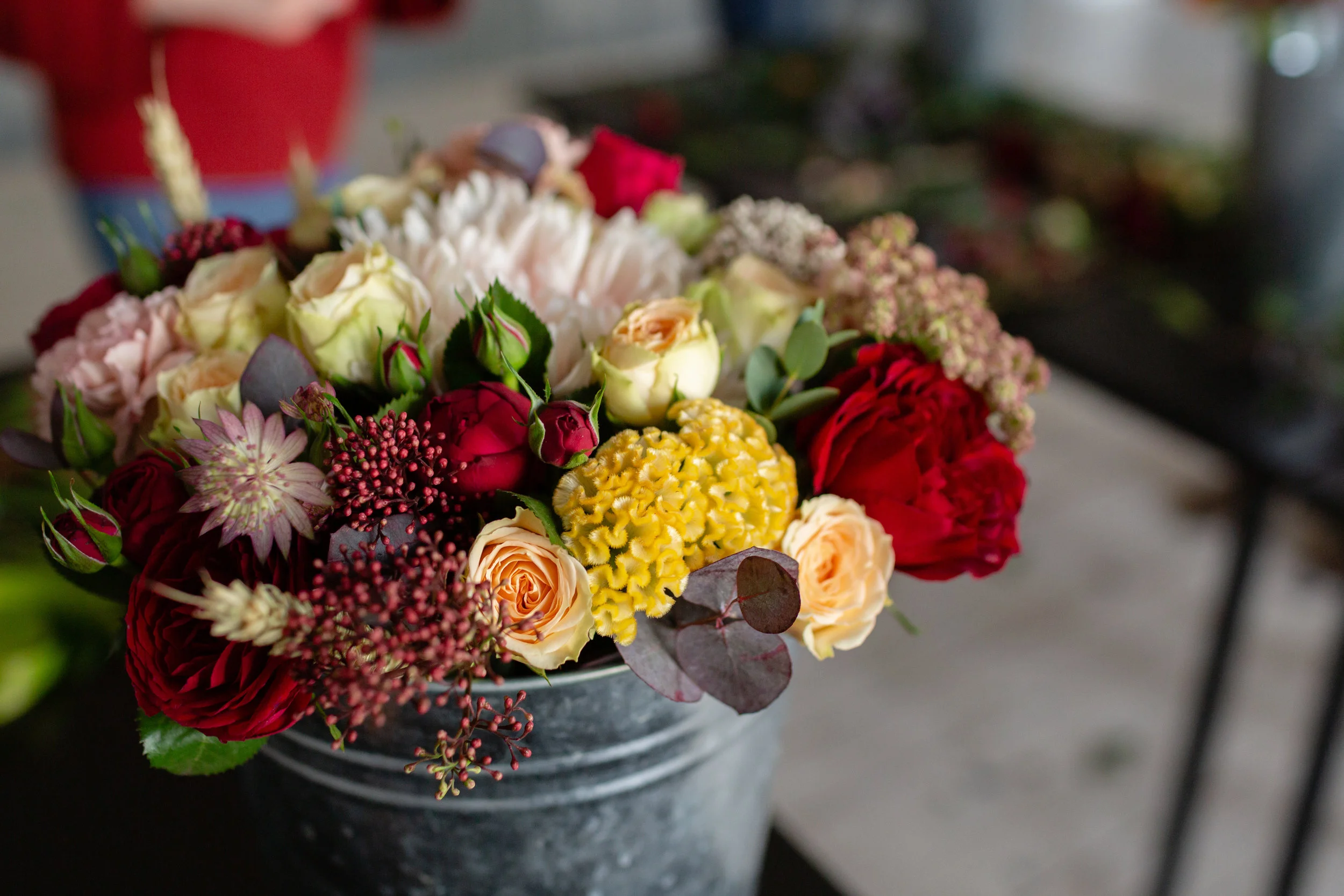The Basics of Cut Flower Care
This post may contain affiliate links. If you use these links to buy something we may earn a commission. Thanks for supporting this blog.
You’ve done your research, carefully estimated and ordered your bulk wedding flowers, and scheduled them to arrive the week of your wedding. Naturally, you'll want to make sure they're in excellent condition for your wedding day! This guide will help you provide proper care for your flowers. While some speciality flowers require extra care, following these steps will protect your blooms from premature wilt, dropping or drying out.
Note: steps 1 and 2 are for flowers ordering online. If you purchase from a store, they will have already completed these steps. If buying from a flower farmer, request their advice for flower care.
I. Receiving
It is usually best to schedule your flowers to be delivered 3 days before the event to allow enough time for hydrating and arranging. For example, if you are getting married on a Saturday, schedule the delivery for the Wednesday before. Plan on hydrating them for the first 24 hours, then prep and arrange them the day before.
Typically bulk flowers arrive packed in boxes without water. It is very important to unpack and hydrate them as soon as possible, especially in hot weather.
Unpack the boxes and inspect the plant material for any damage that may have occurred during shipping. Be aware that flowers look “thirsty and tired” after being shipped so far. If you notice damage, such as broken flower heads, or are concerned about the flowers’ quality, contact your supplier.
II. Water
After unboxing the flowers, you'll need to get them into water as soon as possible. However, a few things must be done first to help them drink and rehydrate themselves well.
Remove excess packaging, such as plastic sleeves and ties or rubber bands. Although you want to get the flowers in water as quickly as possible, taking the extra time to remove excess packaging will save time when you go to arrange. Some flowers, such as standard or garden Roses should be kept in the cardboard packaging they come in (you can remove the plastic sleeves and any rubber bands from their stems though). Double check the growers instructions, if any are included.
Fill large, handled buckets, such as these from Home Depot or Amazon, about ⅓ full with cool water. Do not add ice to the water as it may shock the flowers and cause wilt.
Make sure the buckets are clean- free of dirt and bacteria- for best results. One quick way to clean a bucket is to use a Clorox wipe to quickly swipe the inside of the bucket prior to filling it with water.
Check the water level daily and add fresh water everyday. The flowers will drink a lot of water as they rehydrate.
III. Food
Bulk flowers may come with packets of flower food, which you can use, or you can purchase flower food in bulk (link product). If you decide to use flower food, be sure to follow the instructions and use the correct food to water ratio. Using too much food can shock the flowers and cause wilt.
IV. Cutting and Stripping
The best way to prevent harmful bacteria from growing in the water and wilting the flowers is to remove excess leaves and thorns from the portion on the stems that will be sitting in water. Simply run a dethroning tool (such as this) along the lower portion of the stem and discard what is stripped off. Also, if the leaves of the flowers are unsightly, there is no use in rehydrating them. You can remove excess plant material so the water can go straight to the most important part, the flower.
Finally, trim the cut end of the stems by about 1 inch to allow the water to flow up the stem more easily. Use sharp shears (such as these) for a clean cut of at least one inch off the bottom of the stem. This will remove any stem that is dried out from the journey but not make the stems too short to use in an arrangement. Once cut, place the flowers into the water bucket. Crushing the stem is controversial… some say it helps, others say it doesn't. It is a technique best reserved to woody stems.
I often try to separate out the flowers by over all stem length. Some varieties have wonderfully long stems, while others have much shorter stems of only 8 inches or so. If you combine long-stemmed flowers with the shorter ones, the short ones can sometimes get smashed or crowded out in the bucket. The tall stems could also cause a smaller container to fall over if you are not careful.
Similarly, it can be helpful later to group the bunches of flowers or greenery together by type and color. Then later, when you are arranging them, it is easier to find the different elements because they are all together. The varieties may not be packaged in their boxes by type.
V. Storing
After you've completed the first four steps and placed all your fresh plant material in water, find a safe place to store the buckets until the flowers are rehydrated and ready for arranging. It is not necessary to refrigerate the flowers for rehydrating, but they should be kept away from warm or cold drafts and direct sunlight.
Again, the flowers and greenery will drink a lot of water as they rehydrate, so be sure to replenish the water daily to prevent them from drying out.





